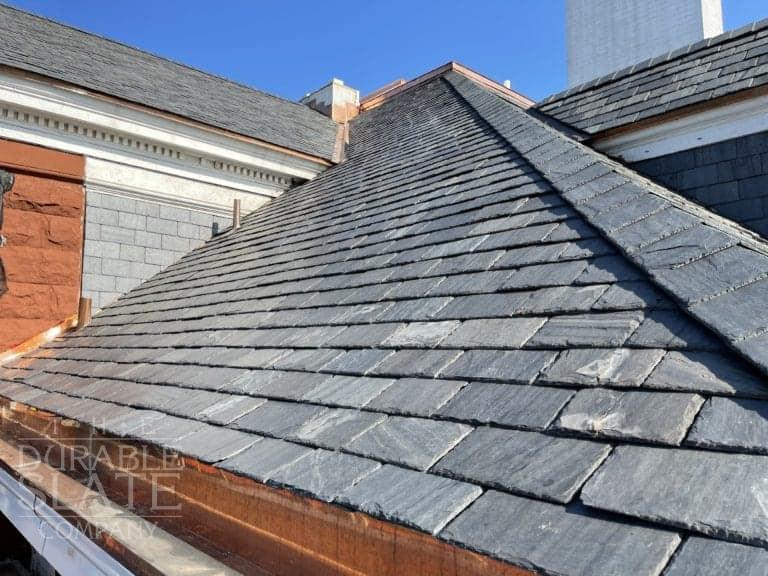Step-by-Step Overview to Finding the Right Roofing Companies in Gainesville
Step-by-Step Overview to Finding the Right Roofing Companies in Gainesville
Blog Article
Ideal Practices for Ensuring Appropriate Roof Covering Ventilation
A balanced consumption and exhaust air vent proportion, commonly 1:300, plays a crucial function, with consumption vents preferably put at the lower edge of the roofing for amazing air entrance and exhaust vents at the optimal for warm air departure. Maintaining insulation away from vents is crucial to avoid airflow constraint.
Understand Air Flow Essentials
Correctly comprehending ventilation basics is important for making sure the longevity and efficiency of roof systems. Reliable ventilation alleviates dampness accumulation and temperature level extremes in the attic room, both of which can bring about significant structural damages gradually. A well-ventilated roofing system helps in avoiding common issues such as mold growth, timber rot, and ice dams, which can endanger the stability of the roof products and the underlying frameworks.
The key goal of ventilation is to assist in the movement of air, enabling for a consistent exchange in between the indoor and outdoor settings. This balance is attained via a mix of intake and exhaust vents that function together to maintain optimum airflow. Intake vents, commonly situated along the soffits or eaves, enable fresh air to get in the attic room room, while exhaust vents, commonly positioned at or near the roofing ridge, enable hot, damp air to get away.
Secret factors affecting the performance of roof covering ventilation include correct positioning, appropriate sizing, and ensuring that both consumption and exhaust vents are unblocked. Normal inspection and maintenance are critical to recognize prospective clogs, damage, or ineffectiveness in the ventilation system, therefore guarding the roof's efficiency and resilience.
Kinds Of Roofing Vents
Roof covering vents play a critical duty in keeping effective attic ventilation and, by expansion, the total wellness of the roof. Various kinds of roof covering vents are readily available, each with special advantages tailored to details roof needs. Ridge vents, for example, are installed along the roofing's top, enabling cozy, damp air to get away from the attic. They provide constant ventilation and mix flawlessly with the roofline, making them both efficient and visually pleasing.

Soffit vents are set up under the eaves and job in tandem with roof covering vents to make certain a well balanced consumption and exhaust system. By permitting cooler air to enter from below, soffit vents assist in the expulsion of hot air through upper vents. Gable vents, located on the outside wall surfaces of the attic room, offer one more efficient remedy, specifically in homes with saddleback roofs.
Evaluate Your Existing Ventilation

Next, think about the age and condition of your roof covering materials and air flow components. Older systems may not adhere to present building codes or might have weakened in time, minimizing their efficiency. Conduct a detailed assessment to recognize any signs of wear and tear, such as corrosion, damage, or gaps that could endanger the system's efficiency.
Furthermore, measure the attic temperature and moisture levels. Heats and humidity can show insufficient air flow - gainesville fl roofing companies. Use a hygrometer and thermostat to acquire precise readings, contrasting them with exterior problems. Persistent disparities recommend prospective issues that require attending to.
Installation Best Practices
Reliable installation of roofing air flow systems is paramount for ensuring ideal efficiency and durability. Correct setup begins with recognizing the particular air flow demands of the building and the roofing it covers. This involves calculating the correct proportion of consumption to tire vents, normally adhering to the 1:300 regulation, which states one square foot of air flow for every single 300 square feet of attic floor area.

Consumption vents should be mounted at the roofing's reduced edge, usually in the soffits, to permit cool air Homepage to go into. Exhaust vents, on the various other hand, must be installed near or at the roofing's peak to assist in the leave of warm, moist air.
Seal all air vent links meticulously to avoid air leaks and potential water infiltration. Usage high-grade products and comply with manufacturer guidelines to make sure resilience and performance. Additionally, integrating ridge vents with baffles can significantly enhance airflow performance by avoiding wind-driven rain and snow from getting in the attic room.
Inevitably, exact installment of roof air flow systems mitigates prospective problems such as mold growth, ice dams, and architectural damage, making sure the roofing's honesty and the building's general health and wellness.
Routine Maintenance Tips
Uniformity in maintenance methods is basic to making sure the long-lasting efficiency of roof covering air flow systems. During these assessments, make sure that vents are free of debris, nests, and other blockages that might restrain air movement.
Cleaning up the vents is one more crucial job. Make use of a soft brush or a vacuum cleaner to eliminate dirt and particles from intake and exhaust vents. Be cautious not to damage the vent displays or louvers during the process. Furthermore, check the attic space for any indications of water damages, which can compromise the useful link stability of the roof system.
Correct insulation is just as essential. Ensure that attic insulation does not obstruct the vents, as this can drastically limit airflow. If any kind of insulation has shifted or settled, reposition or change it to keep a reliable barrier.
Lastly, replace any harmed or missing parts promptly. Busted vents, cracked tiles, or worn-out blinking can all contribute to insufficient ventilation and must be attended to without hold-up. Normal upkeep makes sure that the roof air flow system operates ideally, thereby expanding the life-span of the roofing system itself.
Conclusion
Guaranteeing appropriate roof ventilation is paramount for maintaining the efficiency and toughness of a roof system. Adherence to the 1:300 intake and exhaust air vent ratio, coupled with the tactical placement of vents, is crucial.
A well balanced intake and exhaust air vent proportion, generally 1:300, plays a critical role, with consumption vents preferably put at the reduced side of the roofing system for cool air entry and exhaust vents at the peak for warm air leave. Intake vents, generally located along the soffits or eaves, allow fresh air to go into the attic space, while exhaust vents, often situated at or near the roof ridge, enable warm, moist air to escape.
Soffit vents are installed under the eaves and work in tandem with roofing vents to make sure a balanced consumption and exhaust system. By allowing cooler air to enter from below, soffit vents promote the expulsion of hot air with upper vents. Adherence to the 1:300 intake and exhaust air vent ratio, coupled with the strategic positioning of vents, is vital.
Report this page